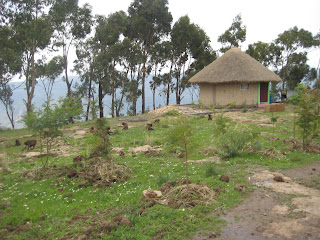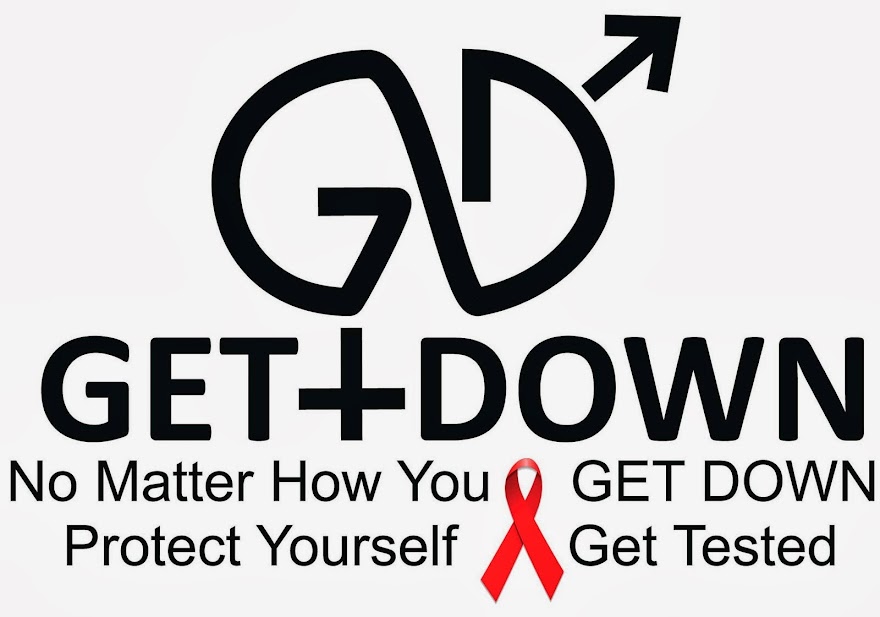This summer
I had the amazing opportunity to travel to Ethiopia for one month. With two other students from my university
and six from Addis Ababa University in Ethiopia, we spent our time at Yesewasew
Genet orphanage in Debre Libanos, which is about two hours north of the capitol
city, Addis Ababa. Our goal was to
establish a library and teach enrichment classes to the students at the
orphanage. I flew 14 hours and
7,000 miles to a country that has surprised me in every way. I was not expecting the lush green
countryside, the misty mountains, monkeys, constant sound of Ge’ez chants, or
the good-hearted and wonderful people I met everywhere. I’ve learned a few dozen words in
Amharic, the local language in the area I stayed in, and I became very close to
the beautiful children that I worked with.
Africa. It sounded like another world to my
middle-class, suburban ears. Everything
about the continent seemed exotic and dangerous. I was warned about the dangers of mosquitos carrying malaria,
food that I won’t be used to, and the very, very wet weather in the mountain
region. The Ethiopians I met at my
school told me about the welcoming culture, the extended families that span
from one side of the country to the other, and the unceasing friendships I
would make there. Before going to
the country, I only knew how to say one word in Amharic: “Amaseganalo,” which
is Amharic for “thank you.” I used
that word more than any other during the trip.
 |
| Debre Libanos, Ethiopia. Photo by Virginia Marshall. |
|
My mother was
mainly concerned about my immunization from diseases prevalent in the area like
Typhoid, Yellow Fever, and Hepatitis B. She is a doctor, and all too familiar with illnesses due to
ignorance or unpreparedness. I had
six shots in the month proceeding my departure, and I took malaria pills every
day while in the country. But my
mother’s caution is a luxury, and even for American citizens whose mothers are
not doctors, health care is luxurious compared to the availability of medical
care in countries like Ethiopia. In
Ethiopia, 1.5% of the populations is living with HIV/AIDS, according to USAID’s
website, and many villages are still struggling to get clean water,
electricity, and plumbing. The
orphanage I stayed at thankfully had electricity, but their water source was a
single pump in the center of the compound, and we had to drink bottled water
because our stomachs were not used to the types of bacteria in the water.
Most people
in Ethiopia still live in very remote and rural areas where there are no
schools for the children, let alone access to hospitals or medications. At-home births are risky because of the
high probability of unsanitary conditions, and mostly responsible for the high
infant mortality rate; 88 out of 1,000 children do not live past age five. Then there is the risk of
mother-to-child HIV transmission, a danger that has been pretty much eliminated
in the United States. It is possible
to prevent mother-to-child transmission, but the mother must take the proper
precautions before giving birth. She
must take a series of pills, which is easy to do in a developed country like
the United States where health education and resources are funded by the
government. However, most
Ethiopians live days away from large
cities where there are health clinics and doctors. Very few doctors travel around the country educating
citizens. There is one doctor for
every 36,000 Ethiopians, whereas in the United States, there is approximately
one doctor for every 500 people, according to indexmundi.com.
But thanks
to Ethiopia’s new Minister of Health, Dr. Tedros Adhanom Ghebreyesus, and
USAID, there are programs in place now that bring nurses and health workers to
these remote villages to educate the people about getting testing and
prevention of HIV. In a new
program known as the “Female Army” (technically, the Health Extension Program),
women are trained in basic medical and preventive care, and then sent out into
remote areas of the country where they might assist with home births, or
provide basic medical services. As
Dr. Ghebreyesus said in an interview with USAID, “To make these women’s groups really
work in the whole country, they need to be able to address three things:
maternal mortality, neonatal mortality and prevention of mother-to-child
transmission [of HIV/AIDS].”
 |
| Debre Libanos, Ethiopia. Photo by Virginia Marshall. |
These
exemplary women do much more; they will lug clean water to remote farming
families, and, when possible, try to convince women to deliver their babies in
hospitals rather than at home. Ayelech
Getachew told USAID reporters in June that the satellite women center she runs
offers women information about various methods of contraception that can help
limit the size of their families. “Anyone
coming for family planning gets HIV tests,” Getachew added.
Another
surprising part of Ethiopian culture was the huge influence of religion on
every day life. The orphans that
came to know lived in a monastery town, and many of the boys were training to
be priests. Every day both boys
and girls had to take four to six hours of spiritual lessons, and all children
were encouraged to follow the strict Ethiopian Orthodox calendar of fasting. In order to honor many of the saints,
Orthodox Ethiopians abstain from food and attend church for a good part of the
day. I have found Ethiopia to be a
country absorbed in traditions, many of which I have come to love, such as “gorsha,”
when a person serves the first bite of injera and wot (very moist flatbread
taken with hands and dipped into a savory stew) to another person as a gesture
of friendship.
According to
the Wall Street Journal, in an article called “Ethiopians Trade Holy Water for
AIDS Drugs” published in March of 2012, many Ethiopians prefer their
traditional remedies to taking western pills for ailments that are new and
frightening, such as HIV. There is
a holy water site on Mt. Entoto, very near Addis Ababa, that is thought to cure
AIDS. By bathing in this water and
drinking at least a gallon of it daily, some Ethiopians believe they will be
cured, and so many adults suffering from HIV/AIDS travel to Entoto. But in a new push to get ARV
(antiretroviral) drugs into the country, medical workers encourage those who
are HIV positive to take ARV pills along
with their holy water remedies. Some priests still warn that taking ARV pills is an
anti-Christian act, but many priests are now seeing the positive affect of
taking drugs. Whereas three years
ago there were 71,900 deaths from AIDS yearly, in 2010 there were 28,100 deaths
thanks to the ARV drugs. One
priest who works at Entoto, Woidbesenbet, said, “I encourage people to get
baptized and to take their medicine each day.”
 |
| Debre Libanos, Ethiopia. Photo by Virginia Marshall. |
Aside from
the “Female Army” education program, Ethiopia is doing a lot of work to make
sure their citizen know the facts about HIV. Again, formal schooling is hard to coordinate for remote
Ethiopian communities; the students at the orphanage I worked at had to live in
another town in order to attend public High School, and many of the oldest
children had difficulty reading and doing simple math because of the scarcity
of education. According to indexmundi.com, only 42.7% of Ethiopians over the
age of 15 can read.
USAID
reported that less than 1% of Ethiopians have a TV, but 41% of households own a
radio. Therefore, the primary mode
of communication with the public is through radio shows, not formal classes or
written pamphlets. One radio
series, “Journey of Life,” is broadcast every Sunday. The radio show was developed by John
Hopkins Bloomberg School of Public Health, and its goal is to educate about
HIV, and start conversations about the tough topic in remote communities. Here is an excerpt from the show:
Azeb’s
Mother: No, my dear. As a mater of fact, there are more and more young people
dying. As far as Dessa is concerned, she was ill for two years.
Azeb: What
was her illness?
Azeb’s
Mother: It was the disease of our time… you call is YEDS?
Elias: Oh,
you mean AIDS?
Azeb:
(Laughs) Did you say YEDS, mamma? So (feels sad) Dessa dies of AIDS?
Azeb’s
Mother: It is not only Dessa. It is said that Abebe, who had a shop in our
neighbour [sic], also died of YEDS. Anyway, many young people are dying of the
disease. It must be more serious in the big city, Addis Ababa.
Elias:
Mother, AIDS does not differentiate between country and town. The disease is
caused by people traveling from place to place, and failing to restrict
themselves to one.
Azeb’s
Mother: So, it’s God’s wrath against mankind?
Azeb: Mamma,
have something to eat and we will talk about it later.
Azeb’s
Mother: Just a minute my dear… you said people get AIDS from traveling from
place to place?
Elias: No,
don’t be mistaken, Mother. One need not to travel to get AIDS. For example. One
can catch the disease through blood transfusion, if blood from an infected
person is given before it is tested.
And so on.
This
particular episode aired in 2001, and the full transcript can be found here:
I hope that
the classes we taught and the books that we brought to the new library at the
orphanage in Debre Libanos will encourage the children to continue their
education. I have come to care
deeply about the children I met, and each one has the potential to make a
difference in their own country.
One day I hope to go back to Ethiopia to see what the children have done
with their lives, and to return to the place where I first learned about the
power of education.
Check out
this Wall Street Journal article “Ethiopians Trade Holy Water for AIDS Drugs”. It’s a good read.
You can
check out the program I am travelled with here. It’s called Kids Helping Needy Kids, and
it is a non-profit organization started by my friend and classmate at college,
Mehron Price, and her sisters: http://www.khnkp.org/
Sources:
--Virginia
Marshall
GET DOWN
Youth Blogger
@vrosemarshall



